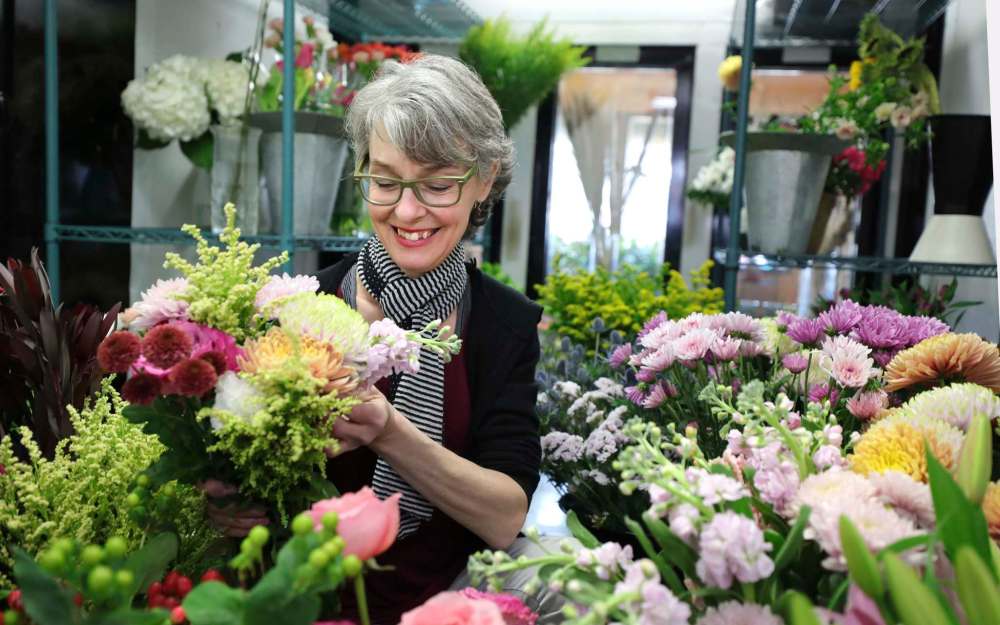Demand blooms as supply wilts Florists plead for patience as pandemic-related flower shortage looms over Mother's Day
Read this article for free:
or
Already have an account? Log in here »
To continue reading, please subscribe:
Monthly Digital Subscription
$1 per week for 24 weeks*
- Enjoy unlimited reading on winnipegfreepress.com
- Read the E-Edition, our digital replica newspaper
- Access News Break, our award-winning app
- Play interactive puzzles
*Billed as $4 plus GST every four weeks. Offer only available to new and qualified returning subscribers. Cancel any time.
Read unlimited articles for free today:
or
Already have an account? Log in here »
Hey there, time traveller!
This article was published 27/04/2021 (1407 days ago), so information in it may no longer be current.
Michele Pitre, the owner of Norwood Florist Design Studio, hopes everyone has some patience as Mother’s Day approaches.
Unlike other industries that can stockpile supply in anticipation of demand that’s about 10 times greater than a normal week, florists are at the mercy of just-in-time delivery.
But with production and supply chains disrupted around the world and pent up demand has soared because people can’t actually see their loved ones in person, florists are being subjected to intense uncertainty in terms of supply combined with sometimes very specific, emotional demands from customers.
“We literally don’t know what we will receive until Monday morning,” said Pitre. “For people who, for sentimental reason, only want a certain colour of roses they may have difficulties.”
Since about 80 per cent of cut flowers sold in Canada are imported, the industry is always at the mercy of weather conditions in Colombia and Ecuador – the largest source of roses and carnations – and with the pandemic causing different jurisdictions to shut down and then open repeatedly, it’s caused all sorts of supply disruptions.

But Pitre is not complaining. After business fell off by about 80 per cent when the first lockdown happened last spring, it’s back in a big way this year.
Business at her small St. Boniface shop is up 30 per cent since the pandemic began.
Whereas Pitre can ask her customers to have faith in her expertise in finding appropriate alternatives, Callia Flowers, the Winnipeg-based national online order and delivery operation, needs to have the bouquets it delivers exactly match those pictured on its web site
Catherine Metrycki, the founder and CEO of Callia, said this is the most challenging the industry has been in the history of her company in terms of being able to get supply.
She said her team has been working on Mother’s Day since before Christmas and she is feeling good about building in a little more flexibility, but she knows it is going to be a crunch.
“Because, industry-wide, the supply is not there for what the demand is looking like it is going to be,” she said.
So it is the worst of times and the best of times for the $600 million annual Canadian floral industry.
Not only does it have to deal with the production and logistics of perishable products, but the industry now also has to deal with huge fluctuations in production, delivery and demand.
In a recent article in the University of Manitoba publication, UM Today, Paul D. Larson, CN Professor of Supply Chain Management, at the U of M, wrote that the “market wilted to an estimated $29.2 billion US in 2020, a 6.2 per cent contraction from 2019, largely due to the pandemic.”
He said the journey those still-blooming roses take – from a farm in Colombia to flower shop in St. Boniface – takes as little as four days. Even so, 45 per cent of cut flowers die before they are sold.

Mariette Mulaire, the CEO of World Trade Centre Winnipeg, said the perspective she has from that global organization helps her remember that everyone around the world has been affected by the pandemic.
“This is not the last story we’ll hear about supply chains disruptions,” she said. “People have been sending flowers when they don’t normally during the pandemic. Demand has skyrocketed, but they don’t have the supply. It is an example of how fragile it can be when the supply chain you count on is so challenged.”
But florists have the good fortune of being in the business of providing happy moments – even now that many people are sending flowers because they are sad they can’t see their loved ones in person.
They’re just hoping that people will be patient and that won’t be upset if there are no yellow roses to be found.
“Sometimes people forget that flowers are real, live, growing things,” Metrycki said. “So it’s not like you can pre-produce 100,000 of them and have them sitting in the back of warehouse. All of us, from the farmers, to the wholesalers to the florists are doing their best managing this incredibly perishable inventory.”
martin.cash@freepress.mb.ca


Martin Cash
Reporter
Martin Cash has been writing a column and business news at the Free Press since 1989. Over those years he’s written through a number of business cycles and the rise and fall (and rise) in fortunes of many local businesses.
Our newsroom depends on a growing audience of readers to power our journalism. If you are not a paid reader, please consider becoming a subscriber.
Our newsroom depends on its audience of readers to power our journalism. Thank you for your support.







